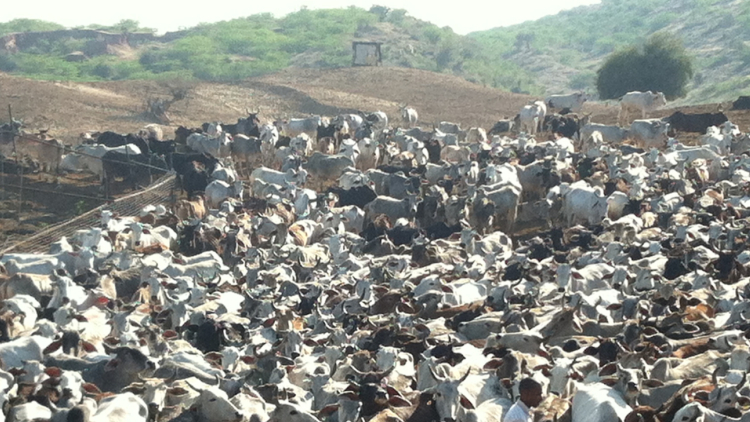The Desi Cow – Almost Extinct
By Jay Mazoomdaar | Apr 03, 2014

India is the world’s largest producer of milk. But in 10 years, we will be forced to start importing it. And the Indian cow will no longer exist.
MILK IN INDIA, is not just a drink, it is an elixir. For almost every Indian — rich or poor — the idea of a daily glass of milk holds a potent and emotional charge. It speaks of parental devotion, well-being and health. This faith in the power of milk is well-grounded: it is the primary nutrient for the young and the old. Nearly 63 percent of animal protein in the Indian diet comes from dairy products. For vegetarians, there is simply no alternative.
The idea of the cow, of course, is also emotively charged because of its mythical place in Hindu iconography, religion and culture: it is quite literally worshipped as goddess Kamdhenu: the cow of plenty. Premchand famously captured its centrality to Indian village life with his memorable tableau of grazing herds returning home at dusk in a cloud of dust, creating the magic hour of “godhuli”.
Again, this veneration is founded in hard pragmatics. Traditionally, India has been home to some of the most varied stock of cows in the world: the red-skinned Sahiwal that milks through droughts, the mighty Amrit Mahal with swords for horns or the tiny Vechur that stands no taller than a dog. Different breeds to suit different climatic conditions. These cows have been the most crucial backbone of India’s rural economy. Low on maintenance costs, their milk yield has not only been a succor and source of nutrition for otherwise impoverished families, their surplus has been sold by small farmers to State-run cooperatives and private companies, which further package and sell them to urban households under brands such as Amul, Vijaya, Verka, Saras, Nestle and Britannia.
The importance of cows to India’s economy, therefore, just cannot be overestimated. India is the world’s largest producer of milk. A whopping 68 percent of these milch animals are owned by small and landless farmers; their produce is distributed through over one lakh village milk cooperatives, which have more than 1.1 crore members. These arteries interconnect every strata of the country. In fact, milk is a bigger driving force for India’s agro-economy than paddy, wheat or sugar.
But in a mere 10 years, all of this could disappear. India is at the precipice of a disaster that no one seems to be trying to avert. In the run up to India’s 66th Republic Day, here’s a really sobering thought: the indigenous Indian cow — one of the country’s biggest assets — will soon cease to exist and we will be forced to import milk within a decade. This is going to have catastrophic and unimagined impact on lakhs of people.
Predictably, an almost criminal lack of government planning and foresight is responsible for this. India does possess the world’s biggest cattle herd, but typically, the individual yield of these malnourished cows is very low. Merely helping small farmers increase their cows’ food and water intake could have had miraculous results. (Indian cows, for instance, are doing really well in Brazil. In 2011, a pure Gir named Quimbanda Cal broke its own 2010 record of delivering 10,230 kilolitres of milk a year, with a daily yield of 56.17 kilolitres.) But instead of focussing on — and improving — the reasons why the yield of these cows was low in India, the government in the 1960s started crossbreeding Indian cows with imported bulls and semen.
Read more: http://www.tehelka.com/the-desi-cow-almost-extinct/?singlepage=1












